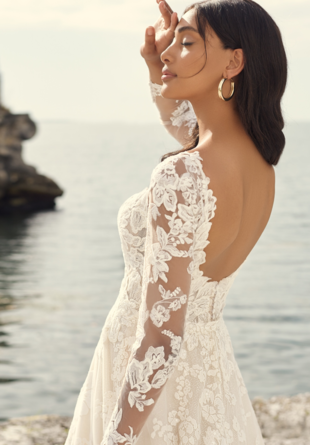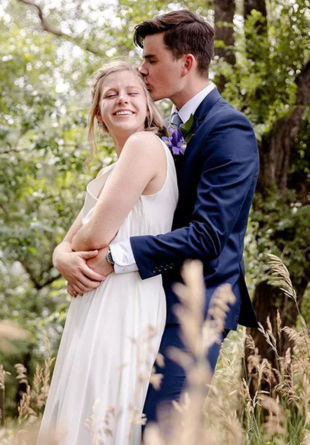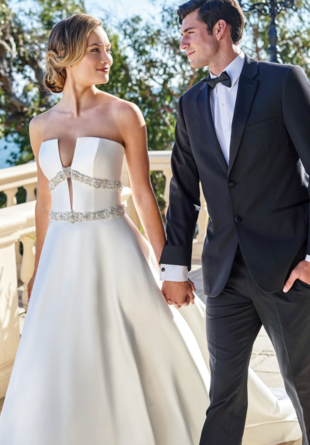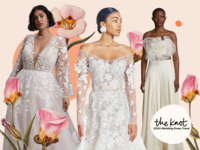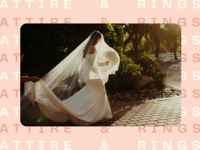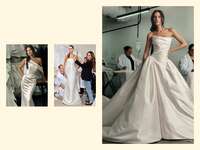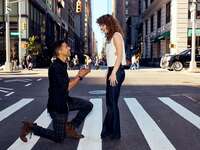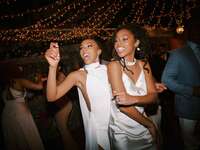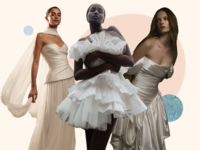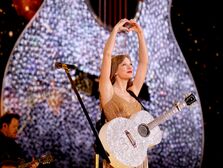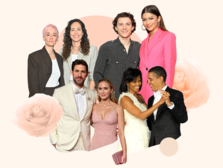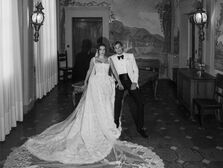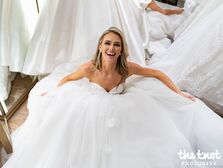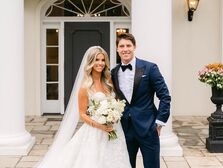Shopping for a Dress? Here’s Your Complete Guide to Wedding Gown Embellishments

Wedding dress embellishments are like adding sprinkles to ice cream: technically nonessential, but the ultimate finishing touch to the design. Embroidery and beading on a bridal dress can bring richness and texture to plain wedding dress fabrics. Iridescent sequins and glitter give gowns a decorative twinkle, while layers of fringe add flourish and movement. Some types of embellishments are also a way to tap into the latest wedding dress trends, even if you're trying not to come across as too trendy. And if you're dreaming of a custom look for your wedding day, embellishments will get the job done, since you can personalize your dress with details like beading or appliqués to ensure that you're wearing a truly one-of-a-kind design.
Unless you're well-versed in wedding dress terminology, your head might be spinning with all of the technical lingo, but we've got you covered. This glossary outlines everything you need to know about the most popular types of bridal embellishments, including how and why they're often used on gowns. Brush up on the basics below before you shop for your own wedding dress with embellishments.
In this article:
- What Are the Most Popular Wedding Dress Embellishments?
- Wedding Gown Embellishments From A-Z
- Embellished Wedding Dress FAQ
What Are the Most Popular Wedding Dress Embellishments?
While most wedding dress designers have dress options with embellishments, some types of bridal dress embellishments are more common than others. Most often, you can expect to see timeless embellishments, like floral lace appliqués, beading, sequins, buttons and embroidery featured on many designs. Of course, each year brings about new trends in the world of wedding dress embellishments.
According to The Knot 2024 Attire and Fashion Study, more and more brides are choosing dresses with pearls, allowing them to become one of most popular types of embellishments for modern bridal gowns. "Pearls are the most on-trend embellishment for any dress or bridal accessory, but we are seeing more pearls mixed with crystals and beads," says Lele Sadoughi, CEO and founder of the namesake accessory brand. Crystals, gems and rhinestones on their own are also rising in popularity as brides search for new ways to stand out. To view these, along with other wedding gown embellishments in person, we recommend visiting a bridal salon. Psst: You can use The Knot Vendor Marketplace to find one near you.
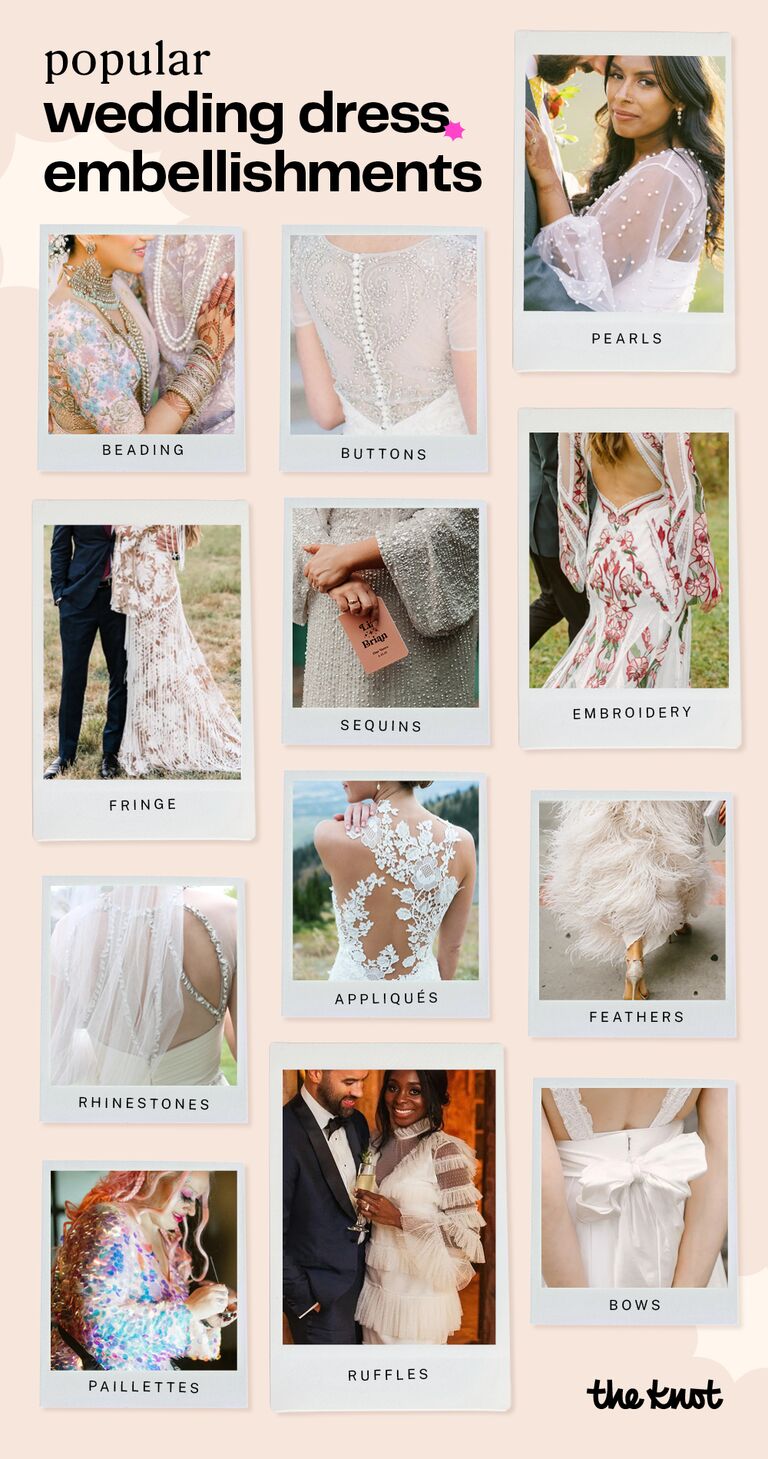
Wedding Gown Embellishments From A-Z
There are many types of wedding gown embellishments (and virtually endless ways to combine them on a single dress). When shopping for your wedding attire, here are some of the most common embellishments you can expect to see:
Appliqués
Appliqués are hand-cut or laser-cut pieces of fabric that are sewn onto a dress. Lace appliqués are the most common type and typically feature floral designs which are used to create floral wedding dresses. Appliqués with beads sewn on top of the fabric are called "beaded appliqués." Appliqués can also be embellished with additional embroidery using metallic or colorful thread.
Beading
A wedding dress with beading is one that features pieces of glass, crystals, gems, pearls or other iridescent materials that have been glued or sewn onto it. Beads in ivory and silver colors are common for wedding gown embellishments, and they can vary in size and shape. Because of the time it takes to sew beads onto a dress by hand, heavily beaded gowns come with a higher price tag—some beaded couture gowns require thousands of hours of work. Popular types of beading on a bridal dress include:
- Bugle beads: These are long, tubular-shaped glass beads.
- Crystal beads: These types of beads are carved out of genuine transparent quartz. Swarovski crystals are one of the most popular types of jewels for wedding dresses and are highly regarded by many designers for their quality and shimmer.
- Pearl beads: Pearl beads for a wedding dress are round or abstract beads made from pearls with an opaque, iridescent finish (often in white, but sometimes in blush, gray or other colors).
Border trim
A border trim is a type of wedding gown embellishment added along the edge of sleeves, necklines, skirt hems or along seams. These trims can be braided, scalloped, ruffled, embroidered, pleated, beaded or fringed.
Bows
Bows are a popular bridal embellishment most commonly found on bodices, skirts, straps and waist sashes. Bows can be sewn into place or tied manually using ribbons.
Buttons
Buttons are a timeless addition to any wedding dress, and they're one of the most popular types of embellishments. They're most commonly used to fasten the back of a gown or the cuffs on sleeves, but they can also be decorative. If you have a train with buttons down the entire back of the skirt, they will be decorative rather than functional—unless you have a dress bustle, which your seamstress can design to hook onto the buttons.
Embroidery
Embroidery is a term used to describe decorative needlework or stitching on a gown that can be done by hand or machine. Wedding dress embroidery most often features floral or swirled patterns and is used to accent wedding dress bodices, sleeves and skirts.
Feathers
Genuine or faux feathers are often sewn onto wedding dress sleeves, hemlines, bodices and skirts for decorative purposes. Feathers can be individually placed for a scattered, abstract look, or used more densely in rows for the most dramatic result.
Fringe
Fringe is a strip of cut fabric or threads held together by a seam or trim along the top. Fringe is often paired with beading or lace, depending on the style. For a boho effect, fringe can be applied to sleeves and skirts, or used all over the dress for a flapper-inspired bridal look.

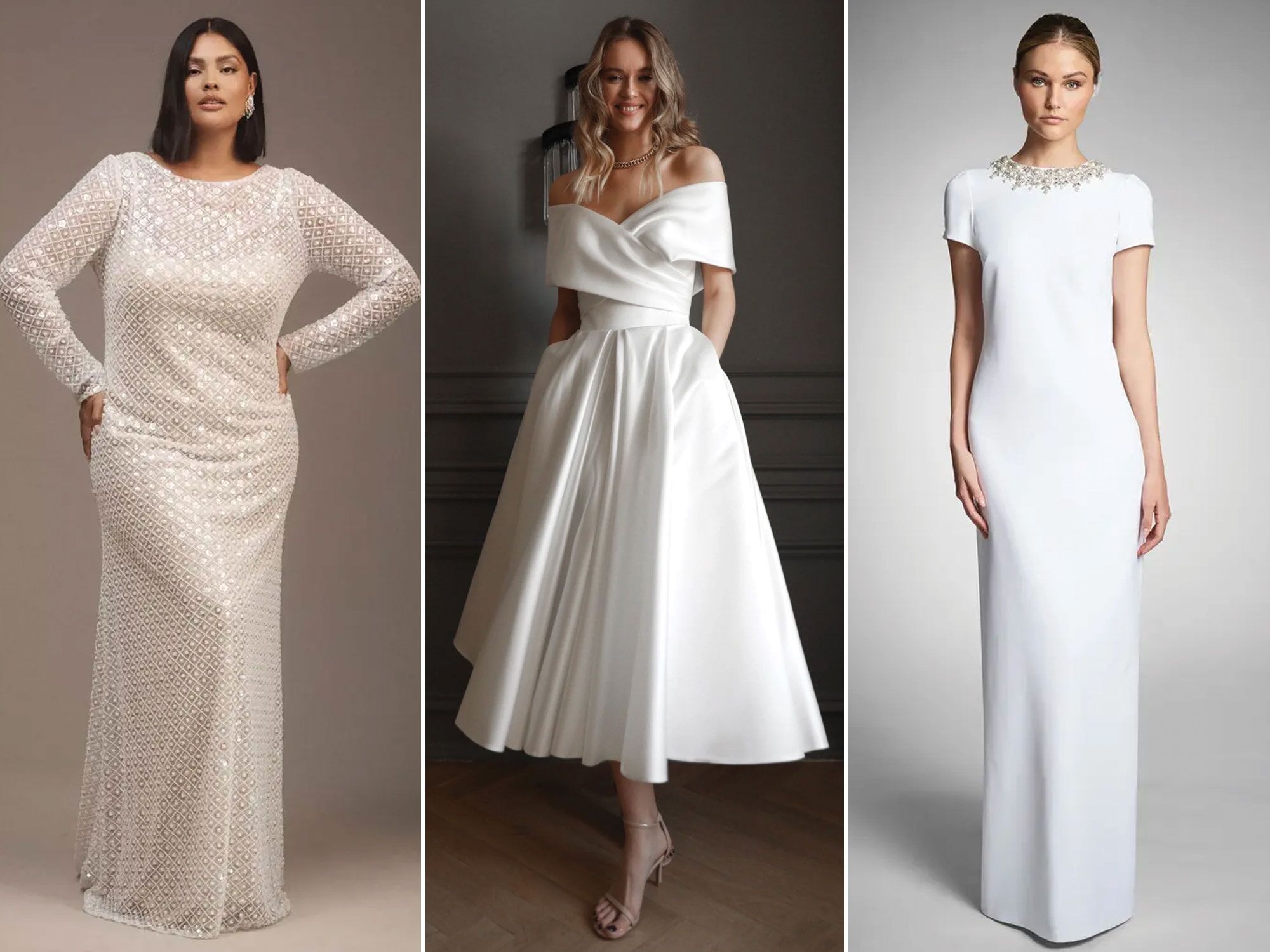

Glitter
When placed on fabric, these tiny metallic flecks reflect light to create a sparkly, glistening look. Glitter tulle is a popular option for sparkly wedding dresses and is sometimes layered underneath another sheer fabric, like organza, to soften the shine.
Paillettes
Paillettes are circular, flat embellishments with a metallic or iridescent finish. These dress embellishments look similar to sequins (more on those below), with a few slight differences. Paillettes are larger than sequins, ranging up to a few inches in diameter, and are attached by one hole at the top (versus the center), which allows them to hang off of the fabric.
Pearls
Authentic and faux pearls are used to adorn gowns, headpieces, bags and shoes. Just like jewelry, pearls can add a lustrous element to your wedding dress. These iridescent gems are popular for both classic and ethereal styles and come in a range of colors, sizes and shapes. Here are some of the most common types of pearls:
- Akoya pearls: These pearls have a perfectly round shape and blemish-free sheen. They're considered the most classic type of pearl.
- Baroque pearls: Baroque pearls are more irregularly shaped and usually found in an oblong form. Baroque pearls are chosen for their nontraditional, one-of-a-kind look.
- Seed pearls: These tiny pearls, which can either be a round or irregular shape, are often used for beaded trims and delicate jewelry.
Rhinestones
Rhinestones are the key to creating a wedding dress with bling. These light-reflecting embellishments are made from artificial materials, like glass or acrylic. Rhinestones mimic the look of diamonds and other gemstones but are available at a much lower cost due to their composition. Similar to rare gems, you can find rhinestones in a variety of cuts, sizes and colors, although silver rhinestones are the most popular choice for wedding dresses.
Ruffles
Sometimes referred to as a "frill," a ruffle is a method of gathering fabric to create a scrunched, rippled finish. Ruffles are often added as a trim along seams, necklines or sleeves and can be made from any type of fabric. Adding ruffles to a wedding dress creates a whimsical, dramatic effect.
Sash
Sashes are removable pieces of ribbon or other material that is worn around the waist like a belt. Depending on the style, wedding dress sashes can be tied, buttoned or hooked into place. They're frequently adorned with other embellishments, like beading, rhinestones or embroidery. Sashes are sometimes included with wedding dresses, but you can also purchase them from most bridal retailers or have a seamstress make them by hand.
Sequins
These circular, iridescent plastic discs are sewn onto fabrics to achieve a glistening effect. Unlike paillettes, sequins are much smaller in diameter (usually only a few centimeters) and are secured flat in place by a hole in the center. White sequins are often used on wedding dresses to add a barely there hint of shimmer.
Embellished Wedding Dress FAQ
Can You Add Embellishments to a Wedding Dress?
If your bridal gown doesn't have any embellishments at all—or you want to amp up the wow factor on a style that's already embellished—you can ask about your options when you order the dress from the salon. It may be easier and more cost-effective for the designer to make the customizations while they're creating the dress for you versus adding them later.
Your other option is to add embellishments during the wedding dress alterations process. A professional seamstress will be able to help you customize your design, whether that means adding lace to sheer long sleeves, enhancing the skirt with beading or sequins or sewing buttons down the back of the gown for a classic look. But be prepared to pay more to create your dream wedding dress, depending on the type of customizations you want. Material and labor costs can tack several hundred (or thousands of) dollars onto your baseline alterations fee.
How Do Embellishments Affect the Cost of a Wedding Dress?
There are a number of different factors that affect the cost of a wedding dress. The type and amount of embellishments it has can certainly play a role in determining its cost. Typically, embellished gowns do cost more than unadorned ones. "Because there is so much more labor and care involved in creating a dress with embellishments, it definitely adds to the value and eventual retail price," says Sadoughi. If you think you might want to purchase a heavily embellished dress, we recommend accounting for it in your wedding budget. The Knot Budget Advisor is a great way to explore average wedding dress costs in your city and learn what affects pricing. Plus, this tool is free and easy to use.
Are There Other Ways to Add Embellishments to Your Wedding Attire?
If you opted for a simple wedding dress but are hoping to level up your look, the good news is that there are plenty of ways you can incorporate embellishments into your outfit. According to Sadoughi, "Accessories allow a bride an opportunity to add embellishment to her look even if she has a classic dress." She goes on to explain that embellished accessories are also great because they are totally size inclusive and don't require any alterations. "It's also a good way to try something outside of your traditional style whether you choose to add a beautiful jeweled bow to your hair, jeweled shoe clips or even a long pair of chandelier earrings."

